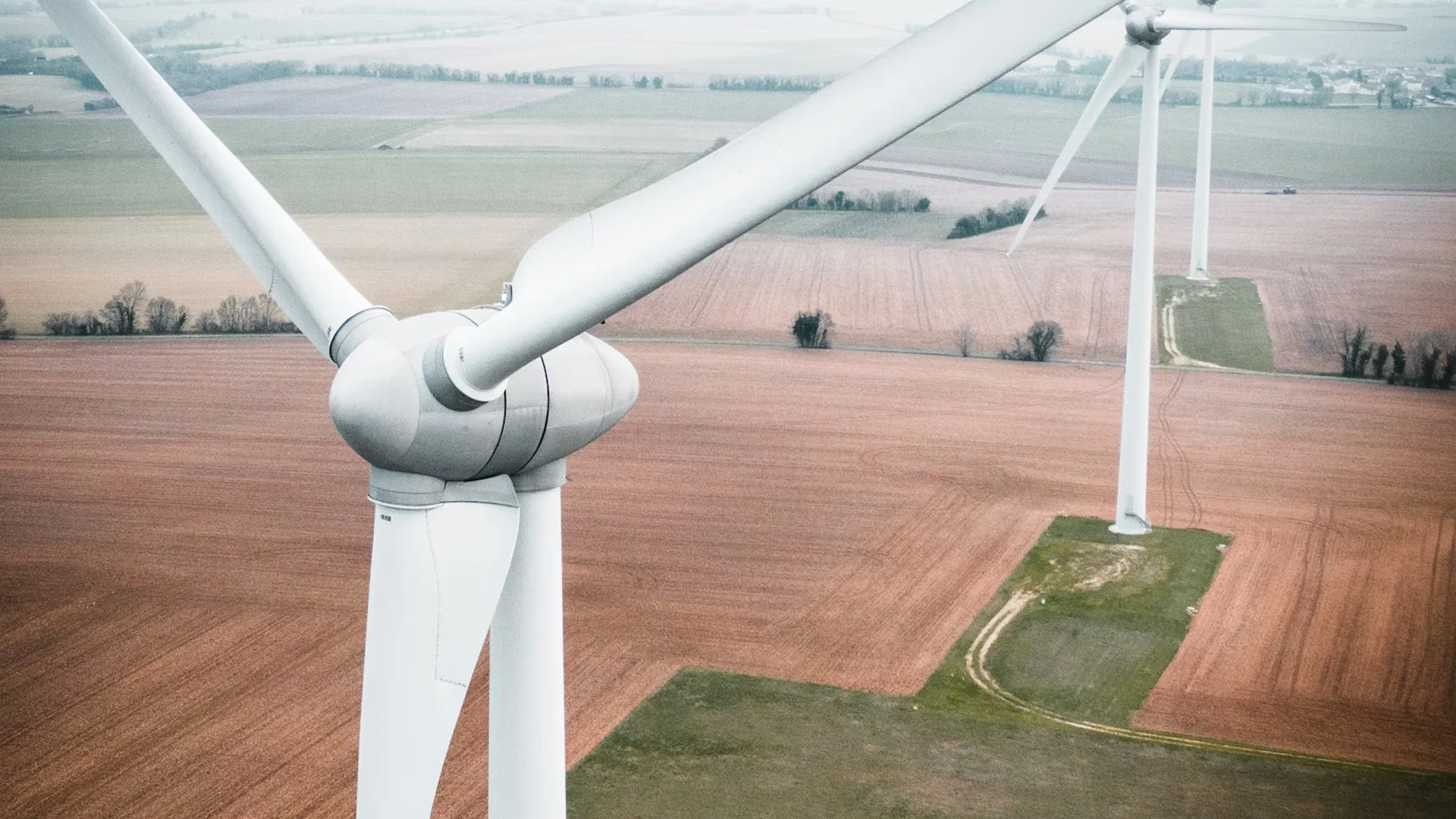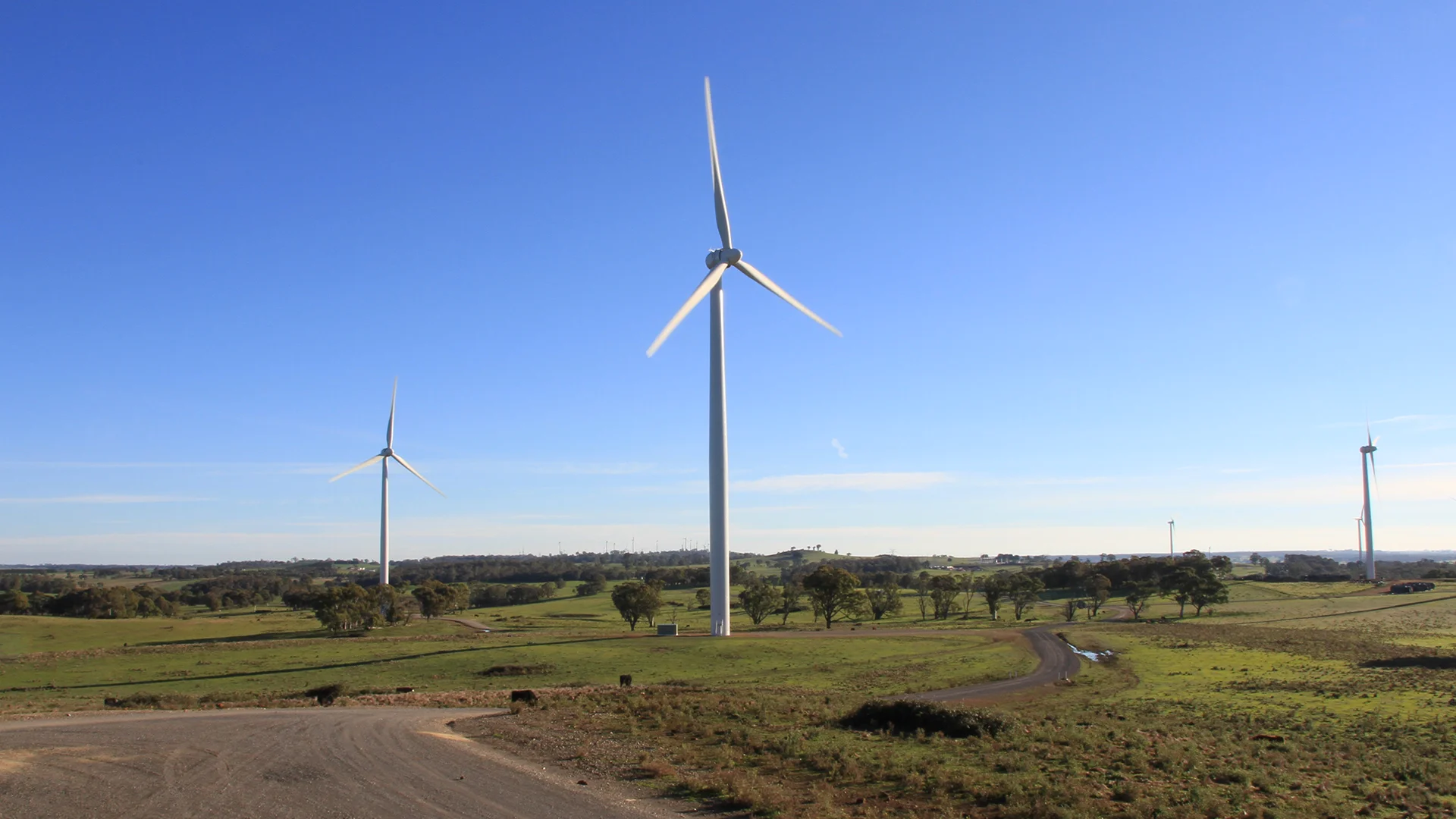Understanding the Critical Role of Bolt Tensioning in Wind Turbine Maintenance
In the ever-evolving landscape of renewable energy, bolt tensioning emerges as a crucial yet often overlooked component in the maintenance of wind turbines. Imagine a world where every gust of wind is harnessed efficiently, and every turbine performs flawlessly. This vision is only achievable when we prioritise the integrity of every bolt holding these massive structures together. In this blog post, we delve into The Importance of Bolt Tensioning in Wind Turbine Maintenance, exploring its vital role in ensuring operational efficiency and safety.
As you may know, wind turbines are intricate assemblies that require meticulous care and attention, particularly regarding the tension of their bolts. Effective bolt tensioning is essential for preventing mechanical failures, ensuring optimal performance, and extending the lifespan of turbines. Understanding this process is not just beneficial; it’s imperative for anyone involved in wind turbine service and maintenance, including operators, technicians, and service providers.
Throughout this article, we will discuss the key aspects of bolt tensioning, including best practices, common pitfalls, and the tools needed to achieve optimal results. We will also highlight how proper bolt tensioning practices can lead to significant cost savings and enhanced safety for your wind farm operations. By the end of our exploration, you will appreciate why this topic is crucial for your maintenance strategy and how it directly impacts your bottom line.
Our team at SBL Solutions brings years of expertise to the table, helping you navigate the complexities of maintaining your wind assets. Our commitment to safety and quality management ensures that your wind turbines operate at their best, contributing to a sustainable future.
If you have any questions or need assistance with your wind turbine maintenance, don’t hesitate to contact us. We’re here to help you ensure that your turbines run smoothly and efficiently, maximising the benefits of renewable energy.
What is Bolt Tensioning and Why is it Crucial for Wind Turbine Maintenance?
Bolt tensioning refers to the precise application of force to a bolt to ensure that it is tightened to the appropriate level. In the context of wind turbines, where components experience significant dynamic loads and environmental stress, maintaining the correct bolt tension is essential for operational reliability and safety. Think of bolt tensioning like the air pressure in your car’s tyres; just as too little or too much pressure can lead to tyre failure or poor handling, incorrect bolt tension can compromise the structural integrity of turbine components.
The key characteristics of bolt tensioning include the method of tension application, the type of bolts used, and the tools employed to achieve the desired tension. Common methods involve hydraulic tensioning, where hydraulic force is used to stretch the bolt, and torque control, which uses a torque wrench to apply a specific rotational force. Each method has its advantages and is chosen based on the specific requirements of the wind turbine’s design and operational conditions.
Understanding the importance of bolt tensioning in wind turbine maintenance cannot be overstated. It is a critical factor that contributes to the overall performance and longevity of the turbine. Properly tensioned bolts help prevent issues such as loosening, fatigue, and ultimately, component failure. This is especially important in the wind energy sector, where the consequences of a failure can be costly and pose safety risks. At SBL Solutions, we ensure that our skilled technicians are trained in the best practices for bolt tensioning, aligning with our commitment to quality and safety.
A common misconception about bolt tensioning is that it is a one-time task during installation. In reality, continuous monitoring and periodic re-tensioning are necessary, especially in environments subject to fluctuating loads and harsh conditions. Regular maintenance checks allow us to identify any deviations in bolt tension, preventing potential failures before they occur. By incorporating thorough bolt tensioning practices into every maintenance schedule, SBL Solutions plays a pivotal role in safeguarding wind turbine operations.
In summary, effective bolt tensioning is a cornerstone of wind turbine maintenance, ensuring that each component operates as intended and contributes to the turbine’s overall performance. With our expertise at SBL Solutions, we provide comprehensive services that prioritise safety and quality, making your wind turbine maintenance as efficient and reliable as possible.
Key Terms for Understanding Bolt Tensioning
To effectively grasp the concept of bolt tensioning and its critical role in wind turbine maintenance, it’s essential to familiarise yourself with some key terms. Here’s a handy glossary that will enhance your understanding of this vital aspect of turbine upkeep.
Bolt Tensioning
The process of applying a specified load to a bolt, ensuring it is tightened to the correct torque level for optimal performance and safety. This is crucial in mechanical assemblies, particularly in wind turbines where structural integrity is paramount during operation and in adverse weather conditions, ensuring reliability in energy production.
Torque
A measure of the rotational force applied to a bolt during tightening. It directly impacts the bolt’s tension and is vital for ensuring that the assembly remains secure and functional under operational loads.
Preload
The initial tension applied to a bolt before it is subjected to external loads. Achieving the correct preload is essential to prevent joint separation and ensure that the bolt functions correctly within the assembly.
Tensioning Tools
Specialised tools used to achieve and measure the correct bolt tension. These tools, such as hydraulic tensioners, are crucial for ensuring that bolts are tightened to the manufacturer’s specifications, thereby enhancing safety and efficiency.
Yield Point
The point at which a material begins to deform plastically and will not return to its original shape. Understanding the yield point of bolt materials helps in determining the appropriate tensioning methods to avoid bolt failure.
Calibration
The process of adjusting and verifying the accuracy of tensioning tools to ensure that they provide precise measurements. Regular calibration is essential to maintain the integrity of bolt tensioning practices, particularly in the demanding environments of wind turbine maintenance.
Joint Integrity
The ability of a bolted joint to maintain its load-bearing capacity under operational conditions. Ensuring joint integrity through proper bolt tensioning is vital to the safety and efficiency of wind turbines.
By familiarising yourself with these essential terms, you can better understand the significance of bolt tensioning in wind turbine maintenance. This knowledge not only enhances your awareness of best practices but also empowers you to make informed decisions about the upkeep and operation of wind energy systems.

Essential Tips for Effective Bolt Tensioning in Wind Turbine Maintenance
Proper bolt tensioning is crucial for the longevity and efficiency of wind turbines. In this guide, we will explore practical tips to ensure effective bolt tensioning, helping you maintain optimal performance and safety in your wind farm operations.
Step 1: Understand the Importance of Bolt Tensioning
Bolt tensioning is not just a routine maintenance task; it is fundamental to the structural integrity of wind turbines. Proper tensioning ensures that bolts are neither too tight nor too loose, preventing mechanical failures that can lead to costly repairs and downtime.
For instance, insufficient tension can result in bolt loosening over time, while excessive tension can cause bolt failure. Therefore, understanding the right tension specifications is key to effective maintenance.
Step 2: Use the Right Tools for the Job
Invest in high-quality torque wrenches and tensioning tools that cater specifically to wind turbine applications. Tools such as hydraulic torque wrenches or tensioning systems can provide precision and reduce the risk of human error.
Make sure to regularly calibrate your tools to maintain accuracy. Using improperly calibrated tools can lead to incorrect tensioning and potential mechanical issues.
Step 3: Follow Manufacturer Specifications
Always adhere to the torque specifications provided by the turbine manufacturer. These specifications are designed to optimise performance and safety, ensuring that all components work as intended under various conditions.
Document any deviations from standard procedures, and consult with your maintenance team to address any concerns regarding compliance with these specifications.
Step 4: Implement a Regular Inspection Schedule
Establish a routine inspection schedule to monitor bolt tensioning across your wind turbine fleet. Consistent checks can help identify issues before they escalate into major problems.
During inspections, look for signs of wear or corrosion on bolts, as these can affect their performance. Regularly updating maintenance logs will also assist in tracking tensioning history and trends.
Step 5: Train Your Maintenance Team
Invest in training for your maintenance personnel focusing on the principles of bolt tensioning and the importance of proper techniques. Knowledgeable technicians can ensure that tensioning is carried out correctly and consistently.
Consider practical workshops where technicians can practice their skills on actual turbine components, reinforcing the importance of precision in their work.
Step 6: Utilise Data and Technology
Leverage technology such as bolt tension monitoring systems that provide real-time feedback on bolt performance. These systems can help detect changes in tension and alert you to potential issues before they become critical.
Moreover, integrating data analytics into your maintenance operations can help identify patterns and improve future maintenance strategies.
Step 7: Document and Review Maintenance Procedures
Keep thorough documentation of all bolt tensioning activities, including torque settings, inspection results, and any corrective actions taken. This practice not only aids in compliance but also provides valuable insights for future maintenance tasks.
Regularly review and update your maintenance procedures based on the findings from these documents, ensuring continuous improvement in your bolt tensioning practices.
By following these essential tips, you can enhance the effectiveness of your bolt tensioning processes and ensure the reliability of your wind turbines. At SBL Solutions, we are committed to delivering high-quality maintenance services that prioritise safety and performance.
Frequently Asked Questions about Bolt Tensioning in Wind Turbine Maintenance
In this section, we address common queries about bolt tensioning and its crucial role in the maintenance of wind turbines. Understanding these aspects can greatly enhance the safety and efficiency of your wind farm operations.
FAQ 1: What is bolt tensioning and why is it important for wind turbines?
Bolt tensioning is the process of applying a specific amount of tension to a bolt, ensuring it is secure and capable of withstanding operational loads. For wind turbines, proper bolt tensioning is a critical part of quality control of components, as it helps prevent mechanical failures, reduces the risk of equipment damage, and enhances overall safety during operation.
FAQ 2: How do I know if my wind turbine bolts need to be tensioned?
Signs that your wind turbine bolts may need tensioning include unusual vibrations, visible movement of components, or if maintenance records indicate that it has been a while since the last tensioning was performed. Regular inspections by qualified technicians can help identify these issues before they lead to costly repairs.
FAQ 3: What are the benefits of using hydraulic tools for bolt tensioning?
Using hydraulic tools for bolt tensioning offers several advantages, including precise control over the tension applied, reduced risk of over-tightening, and increased efficiency during the maintenance process. These tools can significantly improve the reliability of the tensioning process, ensuring that all bolts are uniformly tensioned.
FAQ 4: Can improper bolt tensioning affect the performance of my wind turbine?
Yes, improper bolt tensioning can lead to a range of performance issues, including reduced power output, increased wear on components, and even catastrophic failures. Ensuring that bolts are correctly tensioned is essential for optimal performance and the longevity of your wind turbine.
FAQ 5: How often should bolt tensioning be performed on wind turbines?
The frequency of bolt tensioning can depend on several factors, including the design of the turbine, environmental conditions, and operational loads. Generally, it is recommended to perform bolt tensioning as part of routine maintenance checks, which may be scheduled annually or biannually, or according to the manufacturer’s guidelines.
FAQ 6: What qualifications should technicians have for bolt tensioning in wind turbines?
Technicians performing bolt tensioning should be qualified and experienced in wind turbine maintenance, ideally holding relevant certifications in mechanical fitting and hydraulic tool operation. At SBL Solutions, our team consists of skilled professionals with extensive experience in the wind industry, ensuring high-quality service.
FAQ 7: How can I ensure compliance with safety standards during bolt tensioning?
To ensure compliance with safety standards during bolt tensioning, it is crucial to follow established protocols and use certified equipment. Regular training for technicians on safety practices, along with adherence to SBL Solutions’s comprehensive Work, Health, and Safety Management System, will help maintain high safety standards throughout the maintenance process.
We hope these FAQs have clarified your understanding of bolt tensioning and its significance in wind turbine maintenance. If you have further questions or need expert assistance, feel free to reach out to our team at SBL Solutions.
Wrapping Up: The Critical Role of Bolt Tensioning in Wind Turbine Maintenance
In conclusion, we have explored the vital role of bolt tensioning in the maintenance of wind turbines. Proper bolt tensioning ensures that all components are securely fastened, which is essential for the safe and efficient operation of these renewable energy systems. By maintaining the integrity of the connections, we can prevent mechanical failures, which not only reduces downtime but also enhances the overall performance of the wind turbines.
Understanding the significance of bolt tensioning equips you with the knowledge to recognise its importance in the broader context of wind turbine service and maintenance. As you consider the upkeep of your wind energy assets, remember that effective bolt tensioning is a key factor that contributes to long-term reliability and efficiency. Implementing these practices can lead to substantial savings and improved operational performance.
We encourage you to apply the insights gained from this discussion and assess your current maintenance protocols. If you’d like to explore this topic further or require expert assistance, don’t hesitate to contact us at SBL Solutions. Our team is ready to provide high-quality service and support, tailored to meet the unique needs of the wind energy sector. Get in touch with us today to ensure your wind turbines are operating at their best.
At SBL Solutions, we pride ourselves on our expertise in wind turbine maintenance. Together, let’s ensure the optimal performance of your turbines through effective maintenance strategies, including proper bolt tensioning.

